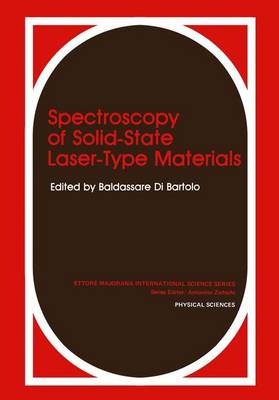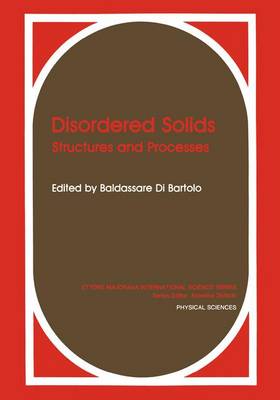Ettore Majorana International Science
2 primary works
Book 30
Spectroscopy of Solid-State Laser-Type Materials
by Baldassare Di Bartolo and Guzin Armagan
Published 1 March 1988
This book presents an account of the course "Spectroscopy of Solid-State Laser-Type Materials" held in Erice, Italy, from June 16 to 30, 1985. This meeting was organized by the International School of Atomic and Molecular Spectroscopy of the "Ettore Majorana" Centre for Scientific Culture. The objective of the course was to present and examine the recent advances in spectroscopy and theoretical modelling relevant to the interpretation of luminescence and laser phenomena in several classes of solid-state materials. The available solid-state matrices (e.g. halides, oxides, glasses, semiconductors) and the full range of possible activators (transition ions, rare earth ions, post-transition ions, actinides, color centres) were considered. By bringing together specialists in the fields of solid-state luminescence and of solid-state laser materials, this course provided a much-needed forum for the critical . assessment of past developments in the R&D of solid-state lasers. Additional objectives of the meeting were to identify new classes of host/activator systems that show promise of laser operation; to alert researchers in solid-state luminescence to current technological needs for solid-state tunable lasers operating in the visible and infrared spectral regions; and generally to provide the scientific background for advanced work in solid state lasers. A total of 71 participants came from 54 laboratories and 21 nations (Austria, Belgium, Canada, F.R. of Germany, France, Greece, Ireland, Israel, Italy, the Netherlands, P.R. of China, Poland, Rumania, Sweden, Switzerland, South Korea, Spain, Turkey, United Kingdom, U.S.A. and U.S.S.R.).
Book 46
This book presents an account of the course "Disordered Solids: Structures and Processes" held in Erice, Italy, from June 15 to 29, 1987. This meeting was organized by the International School of Atomic and Molecular Spectroscopy of the "Ettore Majorana" Centre for Scientific Culture. The objective of this course was to present the advances in physical modelling, mathematical formalism and experimental techniques relevant to the interpretation of the structures of disordered solids and of the physical processes occurring therein. Traditional solid-state physics treats solids as perfect crystals and takes great advantage of their symmetry, by means of such mathematical formalisms as the reciprocal lattice, the Brillouin zone, and the powerful tools of group theory. Even if in reality no solid is a perfect crystal, this theoretical approach has been of great usefulness in describing solids: deviations from perfect order have been treated as perturbations of the ideal model. A new situation arises with truly disordered solids where any vestige of long range order has disappeared. The basic problem is that of describing these systems and gaining a scientific understanding of their physical properties without the mathematical formalism of traditional solid state physics. While some of the old approaches may occasionally remain valid (e. g. chemical bonding approach for amorphous solids), the old ways will not do. Disorder is not a perturbation: with disorder, something basically new may be expected to appear.

